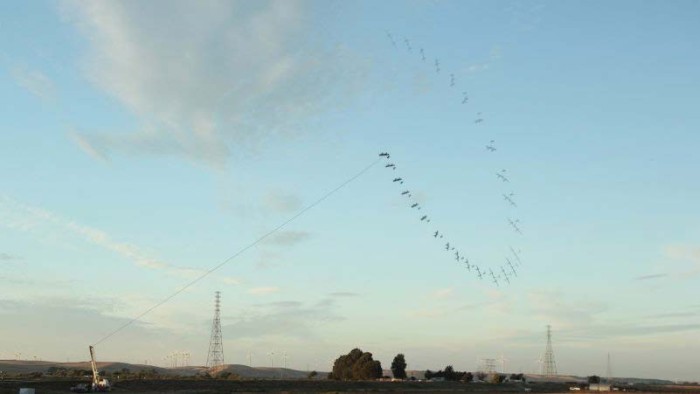Google Makani 600KW kite launches in April

Astro Teller, permanent head of the Google X research lab ( full transcript ), spoke at the close of the South by Southwest Interactive conference yesterday .
Among other things, he told the latest news about Google’s unique Makani kite project . A computer kite-airplane flies quickly in a circle at high altitude and generates a stream of electricity from eight turbines. The wind at the top is much stronger , so the kite is, in theory, much more efficient than a standard design wind turbine.
In many respects, kites are preferable to ordinary windmills: they are mobile, and to start does not require the construction of a structure of 200-400 tons, like windmills, there are no problems of vibration, etc.
Surprisingly, engines of this type are described in a scientific article by a certain Miles Loyd back in the 70s, but only now someone realized this concept.

Illustration from an article by Miles Loyd in the journal Journal of Energy
The principle of the operation of such generators was explained by Makani co-founder Saul Griffith in his short speech at the 2009 TED conference .
Google has invested in startup Makani since its founding in 2006, and in 2013 bought the company altogether .
Two years ago, an experimental model of the M30 flying wind turbine with a power of 30 kilowatts with a wingspan of 8 meters was successfully tested.
Now is the time for new trials. In April 2015, the launch of the new M600 model will take place - with a capacity of 600 kilowatts, with a wingspan of 25.6 m, a flight height of 250 meters (this is the center of the circle described in the air), a cable length of 450 m.
One such snake will fully provide energy to a small village on 60 houses or one apartment building in the city.
Regarding the old 8-meter version, Astro Teller said that over the two years of rigorous testing, not a single accident happened, although the wildest places were chosen for the tests, where the speed reaches 35 m / s and the wind direction changes by 90 ° in a few seconds . But it was not possible to achieve the desired failure. Why welcome? Yes, because Larry Page set a goal to wait for five accidents and eliminate their causes before moving on to the next phase, so the guys did a poor job.
